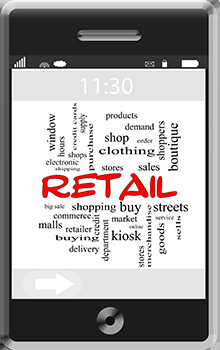The advent of digital technologies has radically changed the way we consume rich media content and the sports industry is no exception. Thanks to the advancements made in technology, it is now possible for sports teams and franchises to provide an immersive experience to fans watching all over the world irrespective of device or form factor.
However, what about the fans at the stadium? Often times, the experience they get while being in the thick of the action might not compare to what a fan might enjoy from the comfort of their homes while watching the game on their 55-inch flatscreen TV. In addition, the process of buying tickets, traveling to the stadium, locating seats, and ordering food or beverages can be less than ideal.
But there’s still an allure to watching a game live and now disruptive technologies like IoT & 5G are coming together to provide highly engaging, immersive and memorable experiences to fans in their stadiums. Given the need for ensuring the highest level of security and safety in the uncertain times we now face, many stadiums are working with IT giants to transform their arenas into smart, connected, and digital landscapes.
IoT helps build Connected Stadiums that Connect with fans
IoT in Smart Stadiums delivers real-time information that helps in improving digital engagement and more connectivity to the real world. The adoption of IoT in stadiums helps in efficient management of stadium infrastructure. Smart Stadiums are equipped with many sensors, cameras, and digital signs that connect to wired and wireless networks. With the help of IoT devices, there is a better connection between stadium networks and team owners with their fans. The sensors in the stadiums provide information about parking spaces, direction to the allotted seats and lines at concessions stands to fans.
Everyone uses a smartphone these days and when the power of mobility is combined with IoT, Smart Stadiums can provide several features that makes the in-person experience so much more enjoyable. Some of these are –
- Information about Parking Spaces to ease stadium entry and exit.
- Agility in finding allocated seats.
- Digital Ticket Purchases that are eco-friendly and convenient.
- Instant Replays and highlights on game app.
- Exclusive team information, trivia, and game stats.
- Ease of ordering food and beverages through an app.
- Locating washrooms with shortest queues.
In addition to the above features, stadium management can collect feedback through their mobile app and determine issues faced by fans in the stadium to address these issues in the future.
Smart Stadiums offer sports fan a safer, more connected, and more attractive sports environment. With the help of IoT in Smart Stadiums, real-time coordination takes place with a personalized experience.
Smart Stadium and 5G Connectivity:
While a lot of the enhancements outlined above have already enriched fan experiences, the implosion of 5G is likely to take things to the next level. Smart stadiums are investing in acquiring 5G technology to make fan experience at events livelier and more enjoyable. 5G technology offers high bandwidth, reduced latency, and improves the flexibility of wireless services which can enhance fan and spectator experiences. 5G allows greater data capacity and faster download speeds as it is about 100 times faster than the typical 4G network.
The cost of deployment for 5G, is much less compared to traditional Wi-Fi which requires huge hot spots to be set up. With the help of 5G technology, fans can stream high-definition video in real-time and get a great view from every corner of the stadium if they so desire. Recently AT&T trialed 5G for spectators with an augmented reality app that enabled fans to superimpose themselves onto live-action.
We are still in the nascent stages of this change and over the next decade there will be a massive shift in the way fans and spectators consume live experiences. This fundamental shift would not just be restricted to sports alone but would also spill over to music concerts, dance shows and theater performances. Apart from significantly personalizing and enhancing fan experiences, there is also a tremendous opportunity for stadiums and arenas to drive up monetization by engaging like never before with relevant brands across several touchpoints.
The next evolution will be when the lines between the physical and digital arenas start blurring and you can recreate an almost stadium like experience at your home but until then the actual stadiums of the world are now a lot smarter, safer and engaging all thanks to the power IoT and 5G.

is an Associate Business Analyst with Happiest Minds. She has good exposure to market research and is passionate about learning new technologies.
She holds a Bachelor’s degree in Electronics and Communications Engineering (B. Tech) from Priyadarshini Institute of Technology and a Master’s degree (M.B.A) in HR & Marketing from JNTU, Anantapur.








